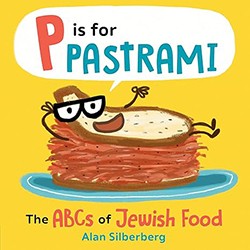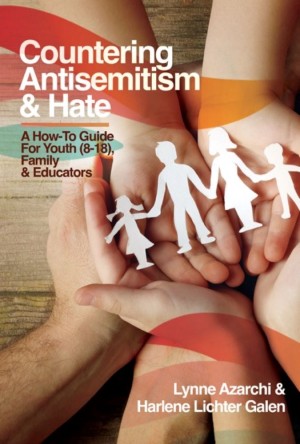Fans of Alan Silberberg’s previous picture book, Meet the Latkes, will be glad to learn that there is more than one Jewish food in his repertoire. While unleavened bread may not seem as inherently funny as delicious potato pancakes, readers of his latest work, Meet the Matzah, will surely be convinced that there’s plenty of humor to be had with Passover food. Sandwich friends such as Alfie Koman and Challah Looyah are classmates under the strict supervision of Mrs. Crust. Prompted by their teacher to explain their favorite holidays, they respond with imaginative tales about nasty bullies, courageous superheroes, and an alternative list of modern plagues. The child-friendly humor works well to engage young readers and provide basic information about Passover.
Silberberg’s pictures are celebratory and exaggerated for comedic effect. Each character is a walking, talking slice of bread, whose speech appears both in lines of text and in cartoon bubbles filled with large font and explanation points. Loaf, the scowling sourdough, is the perfect foil to the naturally shy Alfie Koman, who hides between two books on a shelf. The twins Bun and Bun are two iced pastries who call out Loaf for his meanness. Mrs. Crust, in her purple glasses and green heels, is the adult in the room, setting limits and encouraging the shy Alfie to speak up and teach his friends — some of whom are not Jewish — what Passover means to him.
Soon, the class is entranced by Alfie’s exciting tale, but Loaf obnoxiously attempts to control the performance, forcing Alfie to correct him, and creating an inventive dialogue between falseness and truth. Pharoach, the Hebrews’ six-legged oppressor, sets Burnie Toast and Cornelius Tortilla on the edge of their seats. A contemporary list of ten plagues, provided by Loaf, includes “No Wi-Fi” and “Broccoli for Dessert.” After a while, Alfie finally asserts himself and contradicts this silliness. Moses becomes a superhero leading traditionally depicted people, and Alfie’s language returns his audience to Passover’s true story of enslavement and liberation: “The Red Sea parted and the Hebrew people crossed without harm.”
Unlike Pharaoh, who never learns his lesson, Loaf comes to understand his own limitations, and even apologizes. Everyone is invited to Alfie’s seder, where slices of bread, both leavened and unleavened, recline on cushions and wear kippot atop their square heads. Silberberg’s solution to allowing chametz at a seder is ingenious and unorthodox, two adjectives which also describe his approach to educating children about Jewish holidays. When the class enthusiastically decides that “the Passover story is epic,” Alfie responds with pride, “and true.” Readers young and old will likely add, “and funny,” enjoying the humor of Meet the Matzah, which never diminishes the book’s dual message of freedom and friendship.
Emily Schneider writes about literature, feminism, and culture for Tablet, The Forward, The Horn Book, and other publications, and writes about children’s books on her blog. She has a Ph.D. in Romance Languages and Literatures.





